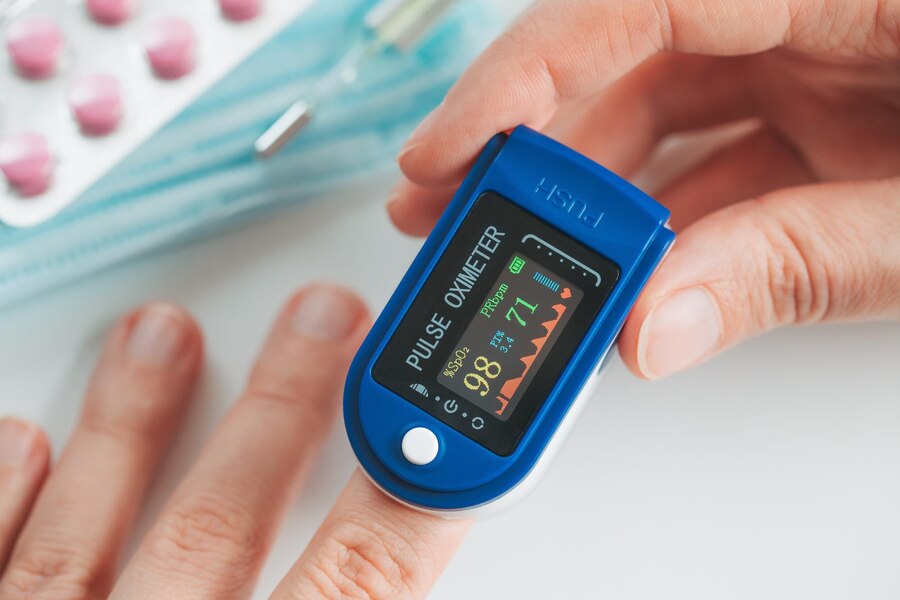All of you need to know that the amount of oxygen that is circulating in your blood is described as your blood oxygen level.
Our organisms require a particular oxygen concentration to function effectively since oxygen is essential for survival. When you inhale, oxygen enters your body via your mouth or nose and moves across your lungs into your blood. While entering your system, oxygen is distributed to each cell of the body. Your body requires energy to perform all of its activities, like metabolism and consciousness, so all your organs need oxygen to produce energy properly.
Your cells produce carbon dioxide after utilizing oxygen. The co2 is then returned to your lungs by your blood, where you exhale it through the mouth or nose.
Your organism closely controls the percentage of oxygen levels in your bloodstream since insufficient blood oxygen levels (hypoxemia) can produce a multitude of severe diseases and harm particular body functions, including your brain and cardiovascular. Low oxygen levels are indeed an indication that your respiratory system, heart, or both may not have been functioning correctly. So, you should be concerned about how to increase blood oxygen levels.

Check the Blood Oxygen Level Test
There seem to be two primary ways for measuring blood oxygen levels: a blood test and oxygen saturation. An oximeter only gives very little information concerning your oxygen concentration.
Test for Oxygen Levels in the Blood:
A comprehensive test called an arterial blood gas (ABG) examination can include a determination of your blood oxygen concentration. An ABG test determines the quantity of carbon dioxide and oxygen in your circulation.
The bloodstream’s pH balance, commonly referred to as the acid-base proportion is also checked during the examination. Your body might be damaged by carrying under or over acid in your bloodstream.
A Pulse Oximeter:
Furthermore, a pulse oximeter can monitor blood oxygen levels using a tiny clip typically worn on a finger. Only the pulse rate and the proportion of your circulation that is supplied with oxygen, or SpO2, are represented by a measurement device result. It is just an easy method to detect if somebody’s blood oxygen concentration is critically low.
In clinics, pulse oximeters are widely used by medical professionals. A pulse oxygen concentrator could also be used at home; you can typically get one from a drugstore, even some shops, and online.
You Should be Aware of the Symptoms of Low Oxygen Levels in the Blood
Here are the possible symptoms of low blood oxygen levels:
- Shortness of breath
- Heavy breathing
- Chest pains problem
- heart rate issue
- Increased and decreased blood pressure
- Dizziness
- Loss of coordination
- Confusion
- Headaches
- Vision problem
You need to know that beyond certain medical conditions, low levels of oxygen in your blood can also be affected by changes in your environment–for example, transitioning to a higher altitude where there is a smaller amount of oxygen in the air.

Know How to Increase Blood Oxygen Level?
The percentage of oxygen in the bloodstream can be enhanced organically in a number of different ways, such as:
- Taking in the Fresh Air: Opening your doors or simply walking outside will maximize the amounts of oxygen your body will take in, increasing the oxygen levels in the bloodstream as a whole.
- Stop Smoking: When you give up smoking, blood flow will generally visibly increase within two weeks. Your discomfort diminishes after one to 10 months. Your body can absorb more excellent oxygen due to all of these things.
- Utilizing Deep Breathing Exercises: Your airways can be opened, and your blood’s oxygen concentration can be enhanced with simple breathing techniques, including pursed-lip respiration and moderate abdominal breathing.
If you really want to learn how to increase blood oxygen levels. And if these simple methods to boost your oxygen consumption are beneficial for you, you should regulate your blood oxygen supply with a pulse oximeter.
- Be Active for the Whole Day: Physical activity boosts your breathing rate, enabling you to increase blood oxygen levels. The beneficial fact is that in the same manner working out your body improves your fitness; exercising your lungs is effective for them too.
Yet, it’s essential to remember that even these simple treatments might not even be adequate to support your blood oxygen to a healthy level if you already have a preexisting disease, specifically a life-threatening illness like asthma or oxygen deprivation.
Have to go to the local hospital immediately as you want to if you present asphyxia-related symptoms.

What is the Average Oxygen Level in Blood?
The components of your bloodstream which are examined during a blood oxygen test period may well have distinct standard ranges based on the labs. There will also be data suggesting the lab’s average values in each test whenever you obtain your lab tests. Consult your healthcare professional about how to increase blood oxygen level and every concern you might well have concerning your results.
A standard test on a pulse oximeter for oxygen concentration level for most persons is between 96% and 100%. The average blood oxygen level in your bloodstream may be lower if you have a lung condition like Bronchitis or asthma. The allowed ranges will be shared by your healthcare professional. When you stay in a place at a higher altitude, your blood oxygen percentages can also be reduced.
Basically, it is necessary to remember that pulse oximeter exactness differs. The oximeter value maybe 3 – 4 percent above or below the average blood concentration level. Your doctor may conduct blood testing to determine your blood oxygen levels for a much more precise result.
Conclusion
It’s not essential to continuously check your blood oxygen level unless you already have a disorder that really can decrease your body’s ability to absorb oxygen. Although utilizing an at-home pulse oximeter to monitor your oxygen levels can be advantageous in some cases, this is not as exact as a clinical examination. Consult your health care professional as quickly as you need when you suffer symptoms such as low oxygen levels or respiratory problems and learn how to increase the blood oxygen level.










![Is Tokyo Ghoul on Netflix? [How to Watch Online]](https://avctv.com/wp-content/uploads/2022/08/AAAABct1DaUzhEt4JeJFeDrmaE_4CGAu39fBN6poMx10hAlWlMRjkkAw84hjmuujWTy2wFC7_Pjnujec-_PqT1GCnnMFMJ15S04baJn1b0WvvbG6hrSNb31_GS4--120x86.jpg)





